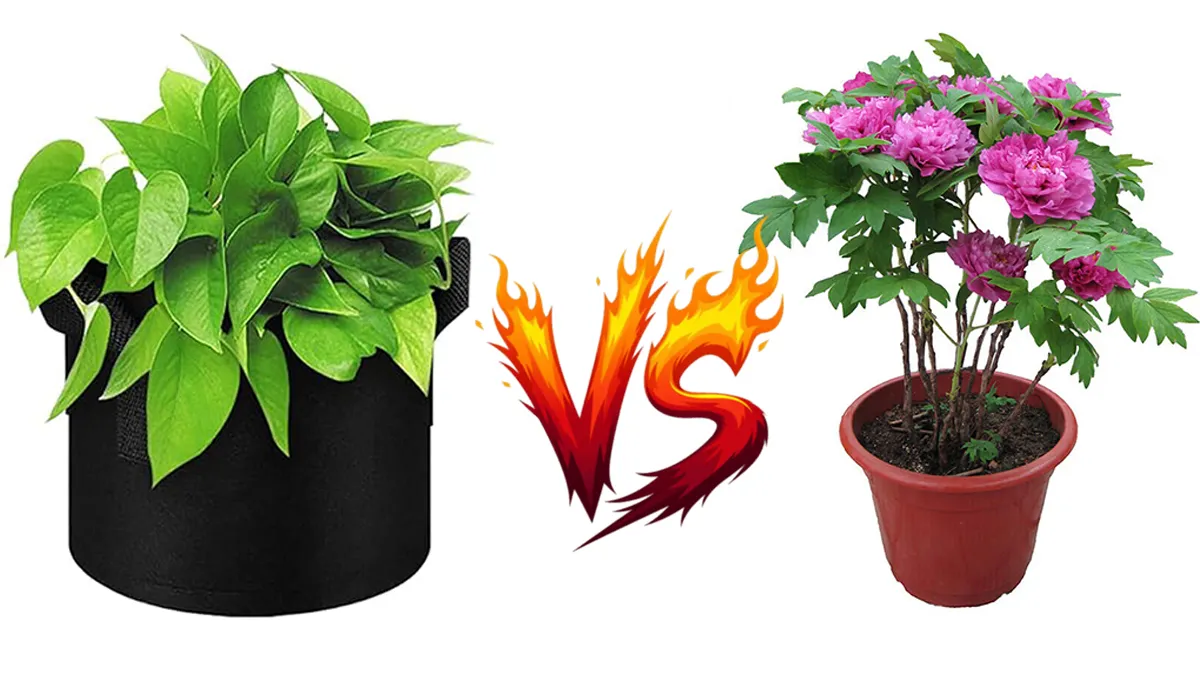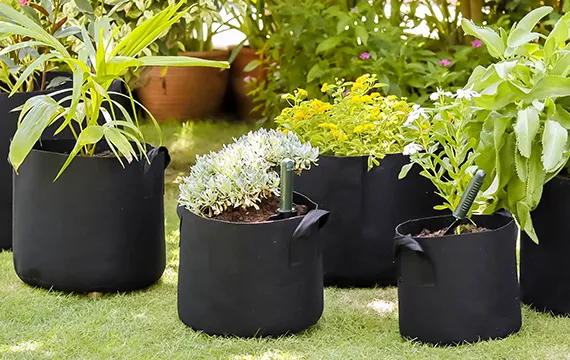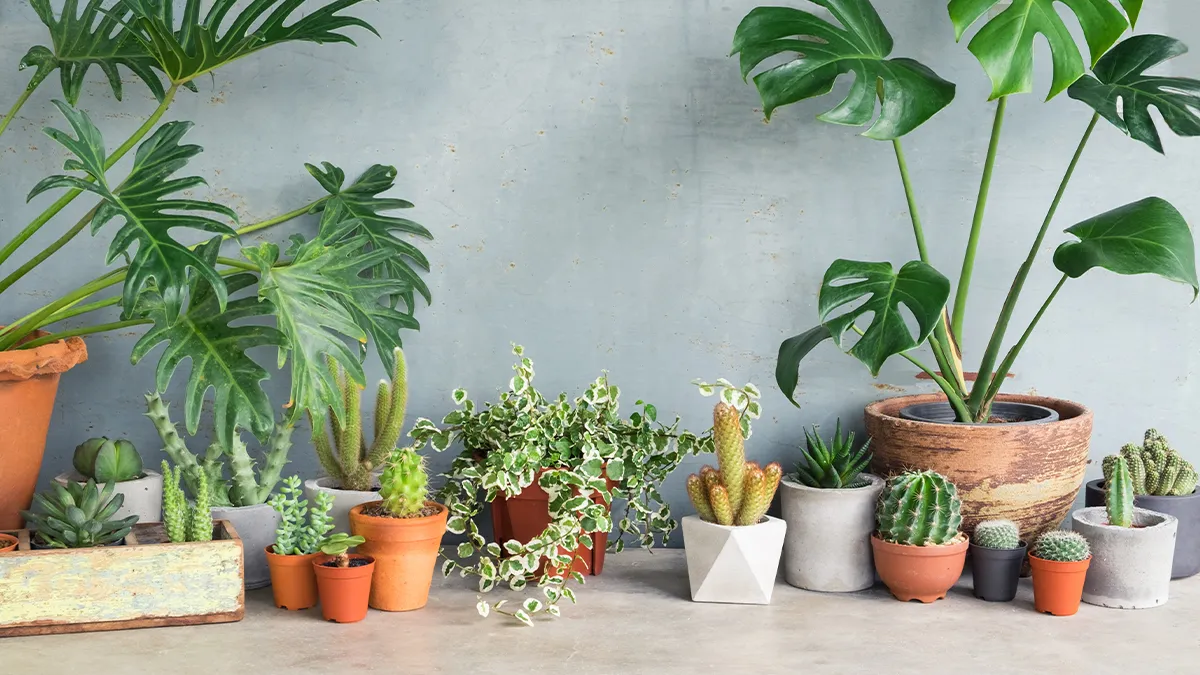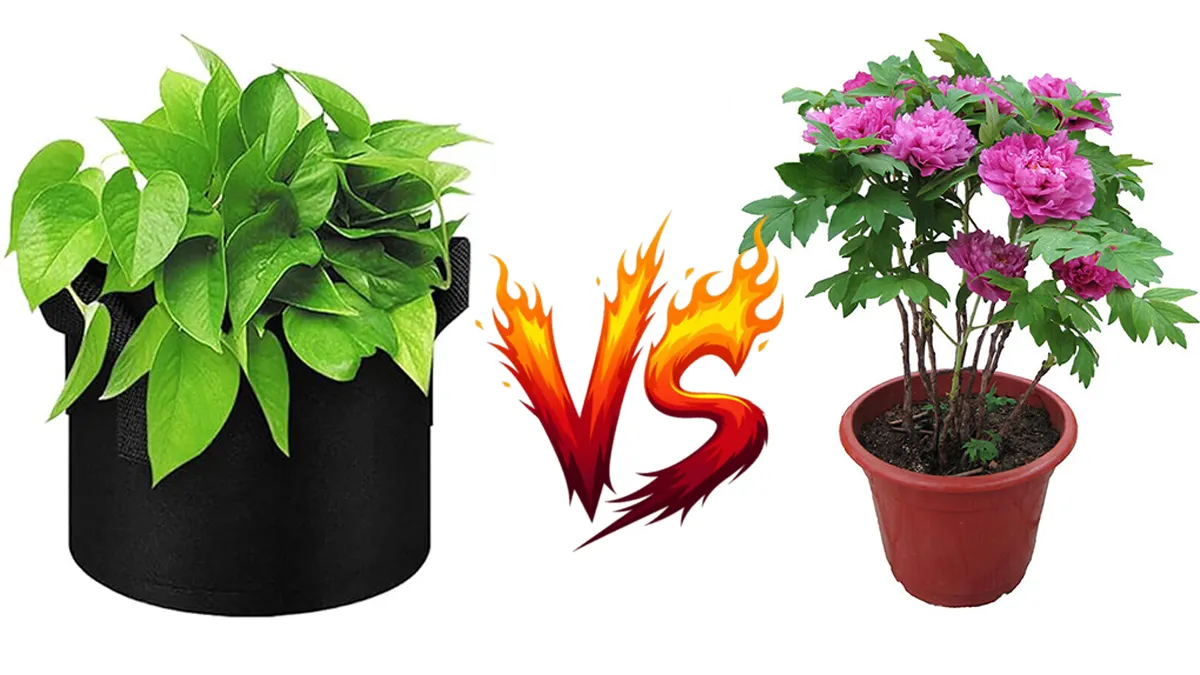Grow bags have become a go-to container for home gardeners, urban growers, and commercial producers. As a manufacturer of high-quality grow bags, we see two common questions from buyers: are grow bags actually better than pots, and which crops benefit most? This article compares grow bags and rigid pots on key factors like root health, drainage, water needs, temperature control, durability and cost — and gives practical buying guidance for retailers, landscapers, and commercial growers. You will also find our recommended grow bag sizes by crop and an easy way to request samples or place a custom order.

What is a grow bag?
Grow bags are flexible containers made from breathable fabrics (polypropylene, spunbond nonwoven, coir, or other textiles) or sometimes thick plastic with designed ventilation. The fabric allows air to reach the root zone, encourages air pruning (roots stop at the bag edge and branch instead), and gives excellent drainage and aeration for container grown plants. Grow bags come in many sizes from small herb pouches to very large sacks for tomatoes and potatoes.

What is a pot?
Pots are rigid containers made of materials such as plastic, glazed or unglazed clay (terracotta), ceramic, concrete, or resin. Pots come in many shapes, finishes, and sizes. Compared with fabric grow bags, rigid pots usually retain moisture longer, can be more decorative, and often last many seasons without replacement. They also vary widely in weight and thermal properties — clay pots breathe and moderate temperature differently from plastic ones.

Comparison
| Feature | Grow Bags | Pots | Practical takeaway |
|---|---|---|---|
| Root health / air pruning | Excellent — encourages fibrous roots. | Risk of circling unless root management applied. | Grow bags are superior for healthy feeder-root development. |
| Drainage | Very high — fabric sheds excess water quickly. | Depends on bottom holes; clay retains more water. | Choose grow bags where drainage and disease control matter. |
| Water retention | Lower — dries faster | Higher — especially heavy clay pots | Grow bags need more frequent watering or a larger volume of soil. |
| Temperature buffering | Lower — soil cools quickly | Higher — thick pots buffer hot/cold | Pots sometimes better for overwintering in cold climates. |
| Portability & storage | Lightweight, foldable | Heavy, decorative | Grow bags are easy to move and store off-season. |
| Durability / lifespan | 2–5 seasons typical (varies by fabric & UV exposure). | Many years to decades | Consider replacement cycles for commercial budgeting. |
| Cost & scalability | Low cost, easy to scale | From low to high cost | Grow bags are economical for large plant counts. |
Why grow bags often give stronger yields for vegetables
- Air pruning improves root architecture. When roots hit a breathable wall they are naturally air-pruned — they stop elongating and branch outward into many fine feeder roots. That dense root network increases nutrient uptake and overall plant vigor. Extension services and growers note this as a primary reason grow bags outperform pots for many annual crops.
- Faster drainage lowers root disease risk. Fabric walls let excess water escape and keep the root zone oxygenated. For crops sensitive to root rot or fungus, good drainage is a big advantage.
- Mobility and low cost aid scalability. Commercial growers and community gardens can deploy many grow bags quickly, move them to optimize light or microclimate, and avoid the freight and handling costs of heavy ceramic pots. Case studies and grower reports recommend grow bags for rooftop farms and small footprint production.
When pots are the better option
- Indoor decoration and aesthetics. If you need a polished look for a living room or entryway, glazed ceramic or stylish resin pots look better than most grow bags.
- Long term plantings and heavy species. Trees or large shrubs planted in containers benefit from the sturdiness and long life of pots.
- Cold climates or winter protection. Thick pots, especially clay, can buffer soil against rapid cold snaps better than thin fabric bags. In some climates that buffering matters for overwintering sensitive plants.
Best plants for each container
- Grow bag: Tomatoes, potatoes, peppers, herbs, salad greens, bush beans, many annual vegetables and small root crops. Grow bags work especially well for crops that respond to air pruning and need good drainage.
- Pot: Orchids, succulents, decorative houseplants, dwarf fruit trees, and any plant where appearance and long term container life matter. Plants that need steady moisture also do better in heavier pots.
How to use grow bags successfully (practical tips)
- Choose the right size. For tomatoes use 10–20 gallon bags depending on variety. For potatoes a 5–10 gallon bag per plant works well. Larger root or fruiting plants need more soil to avoid quick drying.
- Use a light, fast draining potting mix. Avoid heavy garden soil. Mix in compost, coconut coir or peat alternative, and perlite for drainage.
- Water more often but water deeply. Because grow bags drain quickly, you need more frequent watering than similar size pots. Consider a drip irrigation or soak technique for hot spells.
- Fertilize regularly. Mobile containers need a feeding plan. Use a balanced liquid feed or slow release fertilizer tailored to the crop.
- Protect from UV when possible. Fabric degrades under constant sun. Place grow bags where they get sun for the plants but not constant harsh noon light on the fabric itself, or rotate them with some shade.
- Winter storage and reuse. Clean, dry, and store bags out of UV when not in use to extend life. Expect a few seasons from cheaper bags and longer life from heavier commercial fabric pots.
Practical guidance for professional buyers
If you are buying grow bags for resale, landscaping, or contract growing, consider specifying:
- Material & GSM: heavier nonwoven (higher GSM) for longer life; coir-blend or multilayer fabrics for improved water retention.
- Size & volume: 5 L / 10 L / 20 L / 30 L / 50 L options or custom liters — specify plant type and whether you need extra depth for root crops. Industry guidance recommends at least 10 gallons (≈38 L) for many tomato varieties; 20 gallons for larger indeterminate types.
- Thickness & UV treatment: UV-stabilized fabrics extend usable seasons. Ask about UV inhibitors and reinforced stitching at seams.
- Handles & drainage features: reinforced handles, double-stitched seams and optional side vents or inner liner.
- Branding & printing: CMYK or digital print, heat transfer labels or sewn tags for retail-ready packaging.
- Certifications & testing: request material safety data, weight/load tests for handles, and any eco-certification if you need compostable or recyclable standards.
Conclusion
Grow bags and pots each have their place, but if you want healthier roots, better drainage, and more flexibility, grow bags are hard to beat. They’re lightweight, breathable, and make gardening easier whether you’re growing herbs on a balcony or tomatoes in a backyard.
Looking for the right grow bags for your project? We’re a manufacturer with a full range of sizes, custom options, and bulk pricing. Get in touch today and let’s find the perfect grow bags for your needs!
FAQ
Are grow bags better for tomatoes than pots?
For many home gardeners yes. Grow bags encourage a strong fibrous root system through air pruning and give excellent drainage that tomatoes like. Use a 10–20 gallon bag for indeterminate varieties.
Do grow bags dry out faster than pots?
Yes. Fabric grow bags drain quickly and lose moisture faster than many rigid pots. Water frequency must increase accordingly.
How long do grow bags last?
Typical fabric grow bags last 2–5 seasons depending on material, UV exposure, and handling. Heavier commercial fabric pots will last longer.
Can you reuse soil from grow bags?
You can reuse soil after removing plant debris and amending with compost and fresh fertilizer, but watch for disease or pest carryover. Refresh or replace potting mix every season for best results.
Are grow bags better for potatoes?
Yes, many gardeners prefer grow bags for potatoes because the bag can be topped up with soil or straw as tubers form and the bag makes harvest easier.
Can I order custom sizes and printed logos?
Yes — we offer OEM/ODM services, custom sizes, colors and printing.





